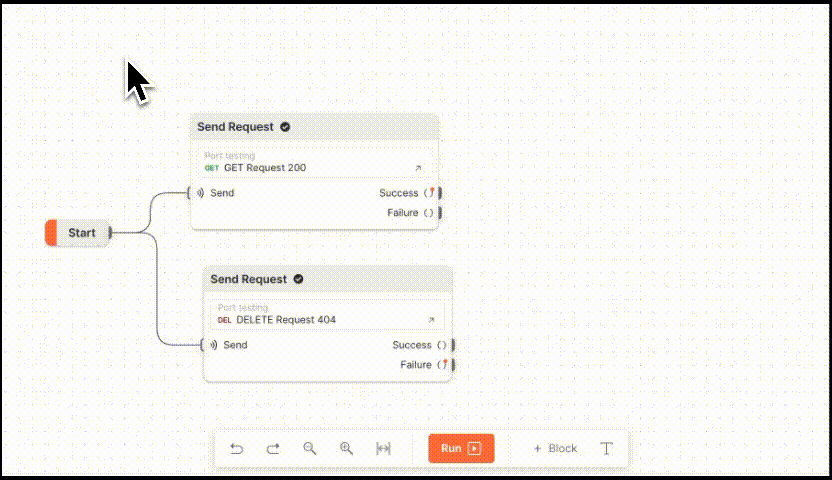Uthread: switching between threads
思路
xv6 已经实现了进程的切换机制,本实验要求参考进程的切换,实现一个用户态线程的切换。
要实现线程切换,必然涉及上下文,即寄存器的保存和恢复,那么需要保存哪些寄存器?实际上,只需要保存被调用者保存寄存器(callee-saved registers),而实现调用者保存寄存器(caller-saved registers)的保存与恢复的代码由编译器自动生成。关于调用者保存与被调用者保存寄存器有哪些可以参照下述 RISC-V 的 calling convention:

另外,根据 user/uthread_switch.S 的注释,thread_switch 最后通过 ret 指令将当前程序计数器的值切换为 ra 寄存器中存储的地址,实现进程的“切换”,因此 struct thread 中还需要保存每个线程对应程序的起始地址(即函数指针)。
在了解需要保存哪些寄存器之后以及如何进行线程切换之后,还有一个细节需要考虑,即栈指针寄存器(sp)的初始化。线程栈的存储位置为 struct thread 中的 stack 数组,那么 sp 应该指向 stack 的位置,但由于栈的地址从大到小增长,因此 sp 应该初始化为 (uint64)t->stack + STACK_SIZE.
代码
diff --git a/user/uthread.c b/user/uthread.c
index 06349f5..74b7f20 100644
--- a/user/uthread.c
+++ b/user/uthread.c
@@ -12,6 +12,20 @@
struct thread {
+ /* 0 */ uint64 ra;
+ /* 8 */ uint64 sp;
+ /* 16 */ uint64 s0;
+ /* 24 */ uint64 s1;
+ /* 32 */ uint64 s2;
+ /* 40 */ uint64 s3;
+ /* 48 */ uint64 s4;
+ /* 56 */ uint64 s5;
+ /* 64 */ uint64 s6;
+ /* 72 */ uint64 s7;
+ /* 80 */ uint64 s8;
+ /* 88 */ uint64 s9;
+ /* 96 */ uint64 s10;
+ /* 104 */ uint64 s11;
char stack[STACK_SIZE]; /* the thread's stack */
int state; /* FREE, RUNNING, RUNNABLE */
};
@@ -62,6 +76,7 @@ thread_schedule(void)
* Invoke thread_switch to switch from t to next_thread:
* thread_switch(??, ??);
*/
+ thread_switch((uint64)t, (uint64)current_thread);
} else
next_thread = 0;
}
@@ -76,6 +91,8 @@ thread_create(void (*func)())
}
t->state = RUNNABLE;
// YOUR CODE HERE
+ t->ra = (uint64)func;
+ t->sp = (uint64)t->stack + STACK_SIZE;
}
void
diff --git a/user/uthread_switch.S b/user/uthread_switch.S
index 5defb12..0eb0a2c 100644
--- a/user/uthread_switch.S
+++ b/user/uthread_switch.S
@@ -7,5 +7,34 @@
.globl thread_switch
thread_switch:
/* YOUR CODE HERE */
+ sd ra, 0(a0)
+ sd sp, 8(a0)
+ sd s0, 16(a0)
+ sd s1, 24(a0)
+ sd s2, 32(a0)
+ sd s3, 40(a0)
+ sd s4, 48(a0)
+ sd s5, 56(a0)
+ sd s6, 64(a0)
+ sd s7, 72(a0)
+ sd s8, 80(a0)
+ sd s9, 88(a0)
+ sd s10, 96(a0)
+ sd s11, 104(a0)
+
+ ld ra, 0(a1)
+ ld sp, 8(a1)
+ ld s0, 16(a1)
+ ld s1, 24(a1)
+ ld s2, 32(a1)
+ ld s3, 40(a1)
+ ld s4, 48(a1)
+ ld s5, 56(a1)
+ ld s6, 64(a1)
+ ld s7, 72(a1)
+ ld s8, 80(a1)
+ ld s9, 88(a1)
+ ld s10, 96(a1)
+ ld s11, 104(a1)
ret /* return to ra */
Using threads
思路
后两个实验与 xv6 无关,而是练习使用 POSIX 线程库在实际的 Linux 平台进行并发编程。
本实验要求使用锁机制,实现一个支持并发的哈希表。首先需要确定的是:哪部分的操作会出现竞态(race condition)?根据观察不难得知 put() 操作可能存在下面这种情况:
线程 1 和线程 2 本次
put()映射到一个桶中(i 相同),都执行完 line 46 ~ 49 的循环之后,e 都为 0,随后先后执行insert(),都创建一个新的 entry,并先后更新table[i]的值,导致先插入的键被覆盖。
像这样,在一次插入操作未完成的情况下,另一次插入也开始进行且映射到一个桶中,就会导致丢键(keys missing)的情况发生。
首先最简单无脑的办法就是给整个 put() 函数加一把大锁:
pthread_mutex_lock(&lock); // lock
for (e = table[i]; e != 0; e = e->next) {
if (e->key == key)
break;
}
if(e){
// update the existing key.
e->value = value;
} else {
// the new is new.
insert(key, value, &table[i], table[i]);
}
pthread_mutex_unlock(&lock); // unlock

可以看到,keys missing 的问题已经被解决,但是大锁带来的就是更低的性能,实际上根据上图可知,该实现在双核情况下的运行速度甚至慢于单核。
实际上,对 table 数组的遍历并不会导致竞态,因此将加锁的操作延迟到遍历结束后:
for (e = table[i]; e != 0; e = e->next) {
if (e->key == key)
break;
}
pthread_mutex_lock(&lock); // lock
if(e){
// update the existing key.
e->value = value;
} else {
// the new is new.
insert(key, value, &table[i], table[i]);
}
pthread_mutex_unlock(&lock); // unlock

做了上述修改后,仍然没有出现 key missing 的情况,同时效率提升了一倍以上。
最后,更细化一些,只有当两个 put() 映射到同一个桶时才会发生竞态,因此可以为每个桶分别设置一把锁,以进一步提高并发性:
for (e = table[i]; e != 0; e = e->next) {
if (e->key == key)
break;
}
pthread_mutex_lock(&locks[i]); // lock
if(e){
// update the existing key.
e->value = value;
} else {
// the new is new.
insert(key, value, &table[i], table[i]);
}
pthread_mutex_unlock(&locks[i]); // unlock

可见,效率又有进一步提升。
代码
diff --git a/notxv6/ph.c b/notxv6/ph.c
index 82afe76..321e269 100644
--- a/notxv6/ph.c
+++ b/notxv6/ph.c
@@ -17,6 +17,7 @@ struct entry *table[NBUCKET];
int keys[NKEYS];
int nthread = 1;
+pthread_mutex_t locks[NBUCKET];
double
now()
@@ -47,6 +48,7 @@ void put(int key, int value)
if (e->key == key)
break;
}
+ pthread_mutex_lock(&locks[i]);
if(e){
// update the existing key.
e->value = value;
@@ -54,7 +56,7 @@ void put(int key, int value)
// the new is new.
insert(key, value, &table[i], table[i]);
}
-
+ pthread_mutex_unlock(&locks[i]);
}
static struct entry*
@@ -118,6 +120,10 @@ main(int argc, char *argv[])
keys[i] = random();
}
+
+ for (int i = 0; i < NBUCKET; ++i) {
+ pthread_mutex_init(&locks[i], NULL);
+ }
//
// first the puts
//
Barrier
思路
最后一个实验主要是熟悉 POSIX 线程库中条件变量(conditional variable)的使用,实现的思路比较简单:前 nthread - 1 个线程在条件变量上休眠,最后一个线程将休眠的所有进程进行唤醒。有关条件变量的用法可以参考 OSTEP:OSTEP: Condition Variables.
代码
diff --git a/notxv6/barrier.c b/notxv6/barrier.c
index 12793e8..e4fd03e 100644
--- a/notxv6/barrier.c
+++ b/notxv6/barrier.c
@@ -30,7 +30,18 @@ barrier()
// Block until all threads have called barrier() and
// then increment bstate.round.
//
+
+ pthread_mutex_lock(&bstate.barrier_mutex);
+ ++bstate.nthread;
+ if (bstate.nthread == nthread) {
+ pthread_cond_broadcast(&bstate.barrier_cond);
+ ++bstate.round;
+ bstate.nthread = 0;
+ }
+ else {
+ pthread_cond_wait(&bstate.barrier_cond, &bstate.barrier_mutex);
+ }
+ pthread_mutex_unlock(&bstate.barrier_mutex);
}





![[Python学习日记-9] Python中的运算符](https://i-blog.csdnimg.cn/direct/273f031708ae409eb08757b0cd557cd0.png)













